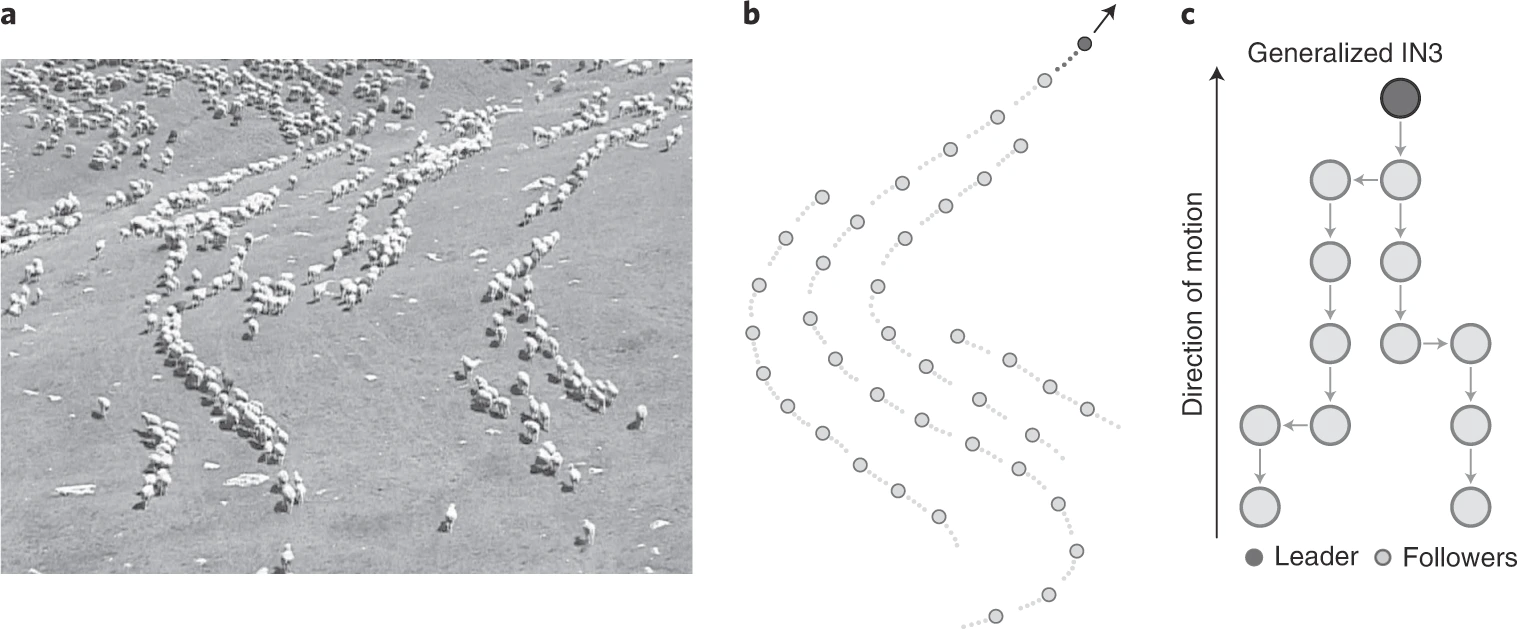Considering pairs of sheep, in group size 2, 3 and 4, we explore the relevancy of the following interactions: aligning (V), moving toward (simple attraction P) or a combination of both (V+P). Using our experimental date and mathematical simulation, three models of interactions were tested: all can interact with all (IN1); all groups members moving in front of you are possibly influential (IN2); only the closest neighbor in front of you is influential (IN3). In each moving phase, every individual could be a leader until the collective motion stops. We found that the best scenario is the following one: when an individual decide to move and become a leader, most often group members abide by moving in a cascade of departures, toward the group member (V) that precede in the file (IN3).

Figure extacted from the paper in Gómez-Nava, Bon et Peruani. 2022. (doi.org/10.1038/s41567-022-01769-8). (a) A snapshot of a large group summering In French Alps. (b) One image obtained from a simulation of a group of 40 sheep on the move using the most relevant model. Leader : darked greyed spot and its movement represented by an arrow. (c) Representation of interaction network in a goup of 13 animals, based on the IN3 model. The cascade of influence (arrow) : it propagates down the hierarchical network, individuals being represented by a circle.
![]() Reference
Reference
Gómez-Nava, L., Bon, R. & Peruani, F.
Intermittent collective motion in sheep results from alternating the role of leader and follower.
Nat. Phys. (2022). https://doi.org/10.1038/s41567-022-01769-8
![]() Contact
Contact
